Spotlight on Kyle Grantham
May 16, 2012
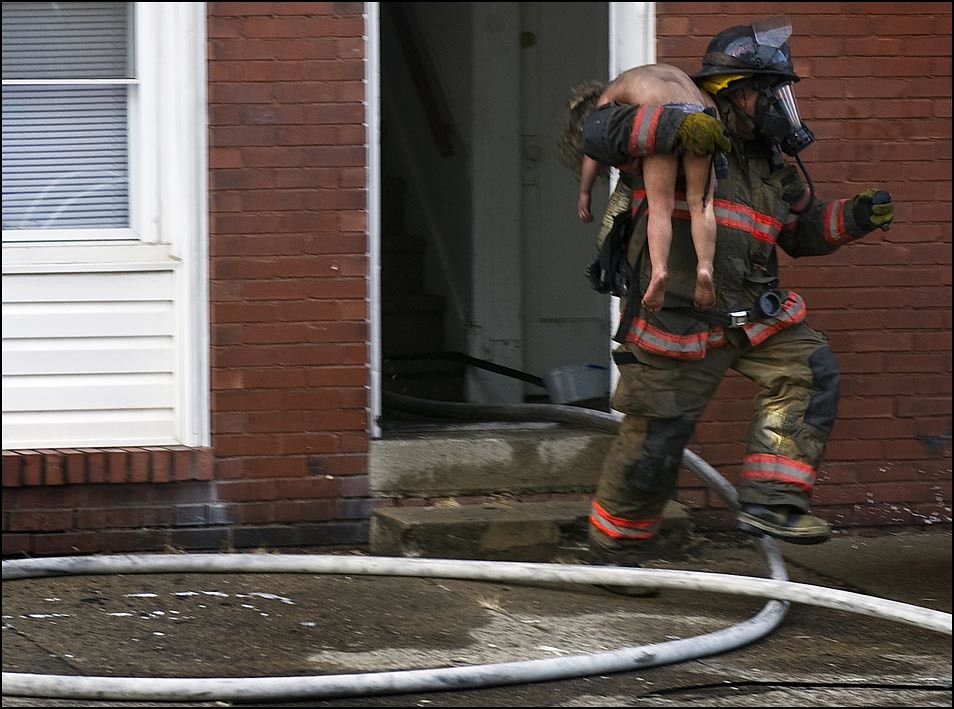
TID:
Kyle, this is a really powerful picture. Please let us know the context of this picture.
KYLE:
We actually had three photographers at the scene, which was an extremely odd summation of events, but our coverage as a result was superb. The fire broke in the early evening, and I was already coming to the end of my workday. A call came across the radio that there may be people trapped inside a fire.
I think I dismissed the call initially, but my photo editor asked me to go back up another staffer, Erin McCracken. I ran out and the first thing I saw at the scene was smoke pouring out of the building. Erin was already there and we also had another staffer, Jason, who heard the call on his scanner. He was on the far side. Being the third wheel was pretty awkward at this point. I didn't want to step on either of their toes, so I just bounced around trying to stay out of their way.
TID:
What was going through your mind when you began the shoot?
KYLE:
It was a really complicated situation. I'd shot a bunch of fires in Evansville, most of them meth related and in abandoned houses. I'd never been in a situation where people were trapped inside. As soon as I got to the scene you could just tell it had a different feel. More people gathered around than normal. It was much less about spectating and gawking, which wasn't something I was used to seeing.
I figured the best course of action, knowing we already had a shooter on the scene and I was there as a back-up, was to find Erin and see where she was, and try to stay out of her way and show a different angle of the scene. So once I found her, I moved to the opposite side of the fire, and ran into Jason. I literally almost ran in to him, he was blending in so well. I was, in a sense, redundant, so it took some pressure off and let me explore the scene and take some risks.
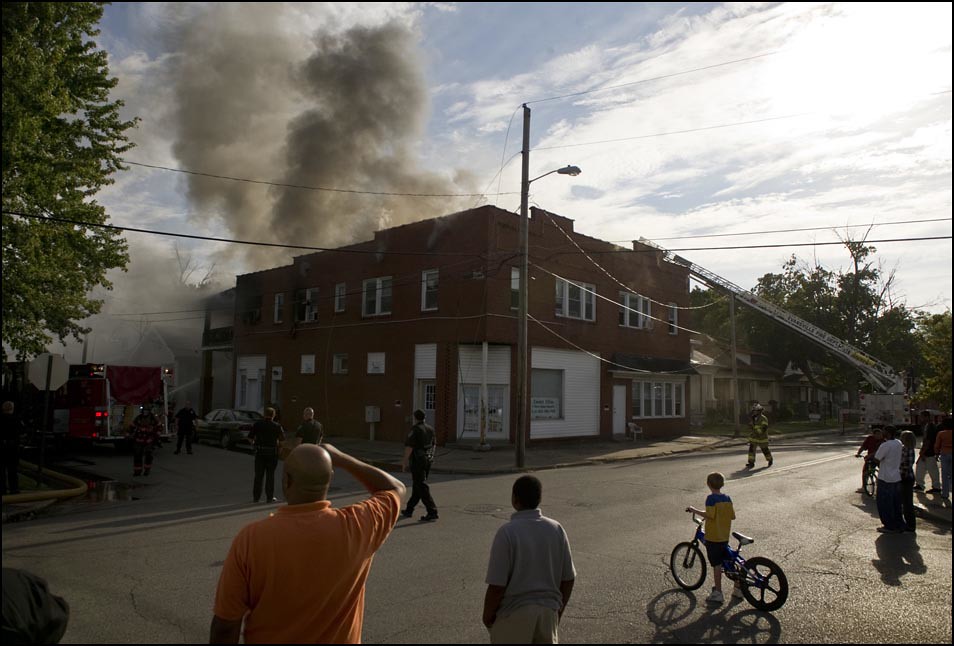
TID:
I always wonder how people's body language affects things. Can you speak to how you carried yourself and interacted with others?
KYLE:
I've found more often than not, if you carry yourself like you're supposed to be somewhere, no one is going to question you. We had a pretty good relationship with the local emergency responders in Evansville, and oddly enough, a lot of the photo reprint orders I had would later come from first responders at scenes. In Evansville they seem to understand why we're here, and especially in meth cases, I really think they want us to keep the public aware of what is going on in their community.
While I wasn't worried about getting hassled, I still did my best to blend in and not draw attention to myself. You never know when tensions are going to get too high, and an officer is going to try to play it safe and clear people out. I try to walk around a scene if I can, evaluate where the light's coming from, where the action is, where I can get the best view of what's happening or the shot no one else has. At the same time, I want to be respectful of people. As journalists, we see tragedy all the time, but for the people there, this is most likely the worst day of their life.
When it comes to the crowd, you have to balance your desire for a frame and respect for the subject. No one wants a camera in their face in this situation. I've seen plenty of times where television videographers can't wait to get in someone's face. I tried to keep my distance from the family. It was more by accident that I wound up right next to them as I was shooting. More often than not, I'll use my long glass - that way I stay out of their space, any moments stay true, and no one is giving me hell for shooting a sensitive situation. The worst feeling in the world is making a good frame, getting told off, and then having to continue shooting a sensitive situation with that person a few feet away.
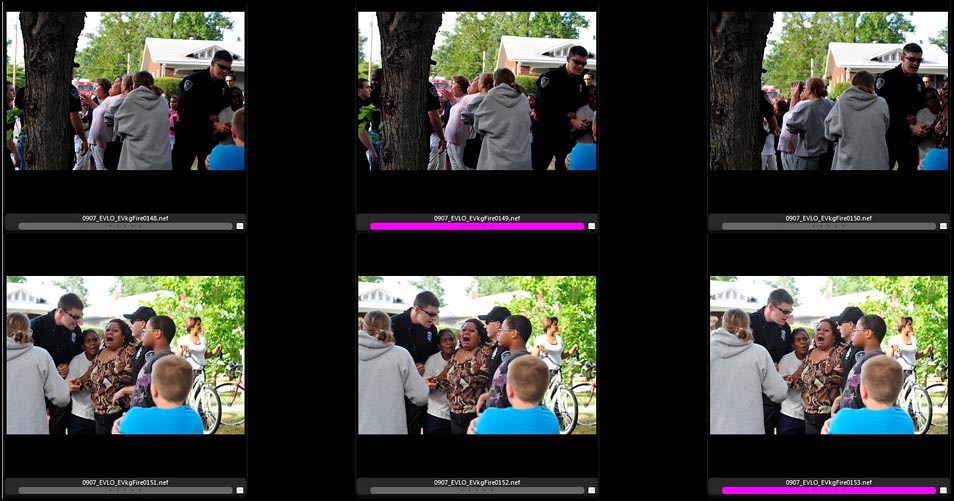
TID:
Can you also talk about how you speak to people in sensitive situations?
KYLE:
My number one priority is to make sure I'm not doing more harm than good. Introduce yourself, make sure they're ok, and show them you're a human being before anything else. People so often think we're vultures, and I've found if you shatter that expectation right off the bat, they're usually pretty ready and open. You also have to gauge the situation too. More often than not people want their story to be told, they just need it to be on their own time. Be respectful, and try to empathize beyond anything else.
TID:
Now, onto the moment. Please describe what was happening at the moment the image was made.
KYLE:
I wound up near the middle of the building, and I was right next to the family of the people stuck inside. I could hear them loudly explaining over the noise of the trucks where the girls and their mother were inside the building. I knew at that point that this was the real deal. I decided to hold my ground. At this point, if I moved I risked losing the shot. I had no idea where anyone would go if they brought someone out of the building, whether they'd turn right or left, so I figured I'd play the middle ground and try to compose accordingly. There were ambulances to my right, and one down the street to my left, so it was a 50/50 if I picked either side of the building to shoot from.
I kept an eye on the building, but also realized the African-American man next to me might be the father of the girls inside. I snapped a few frames of him talking to police and then the person I thought was the girls' grandmother. I heard a scream and turned to see two small legs against a fireman's jacket. I reached down, grabbed the camera body on my right shoulder (not realizing it had my wide lens on it) and fired a burst. I heard a scream I'll never forget from the grandparents. Now realizing I had the wrong body in my hand, and thinking I had completely missed the shot, I swung my long lens body over and fired off a burst of the people crying. It wasn't until I got back to the newsroom that I knew what I had.
It wasn't long before a second girl's body was brought out and immediately placed on the ground where they began performing CPR on her. The family and neighbors where hysterical and the police began trying to clear everyone from the sidewalk including myself. I didn't want to argue with them in the middle of the situation, so I backed off a few steps and crouched down behind some people where I thought the cops couldn't see me, trying to get an image of them trying to save the little girl. I should have been a few steps further back because a vehicle's mud flap blocked the top of the girl's head. Another officer caught on to me before I could move and blocked the shot completely, standing in front of me after just a few frames.
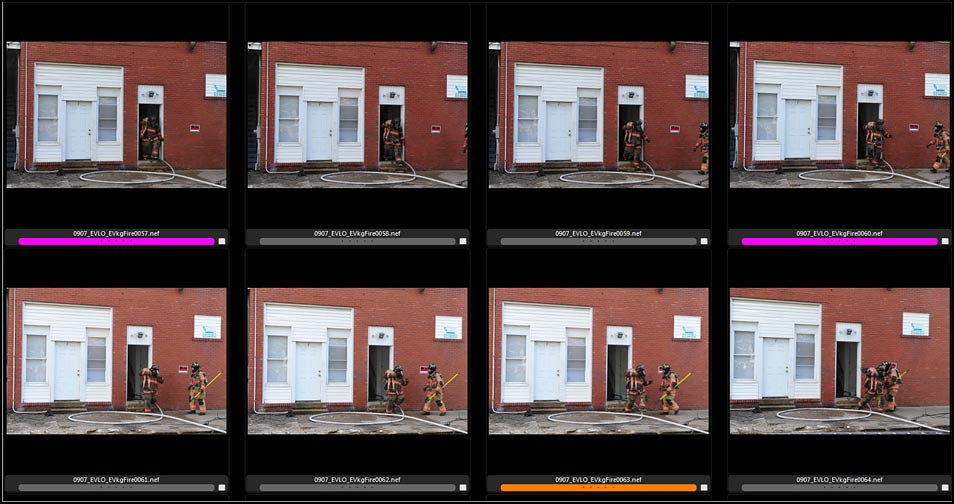
I managed to talk my way back to my previous shooting position and within a few seconds saw an army of firefighters coming down the steps at once. I realized they were carrying the girls' mother, who was quite heavyset. I think it took at least eight firemen to bring her down the steps. They started working on her and, now that I had a clearer view, I snapped a few frames.
TID:
Was there any conflict during the shoot? If so, how did you handle it?
KYLE:
As I started to shoot, a young girl, maybe 8 or 9 years-old, was standing next to me and screamed, "That's my aunt, why are you taking pictures of my aunt?" I had no idea what to say. At the time I was 23 years-old, with less than a year of professional experience under my belt, and I'd never been faced with that kind of question. How do you answer a little girl and make her understand? "I'm just doing my job," doesn't cut it. I said something to the effect that I was trying to make sure people see how brave the firefighters were for trying to save her, which seemed to calm her down, but I decided for a new shooting position away from the family so I moved to the far side of the building. A few moments later paramedics wheeled the woman past me to the ambulance and I snapped a few frames. That photo ran in the gallery, and maybe in print (I can't remember), and when she died at the hospital the next day my inbox was flooded with less than congratulatory emails.
We had comments on the website that we published the photo to sell papers, which is just insane. The Courier & Press is a community paper. The last thing that sells papers is photos of dying people. People questioned the decision to run the photos at all. We stood by the decision, and after a day or two everyone moved past it, or at least I stopped seeing any emails. There are always people who don't understand why we do what we do.
It came out a few days after the fire that there were no smoke detectors in this apartment building. Maybe if people see the harsh reality of what can happen when you don't have a smoke detector they'll take the issue more seriously. We always hope our work as journalists can create change.

TID:
What did you learn about yourself in the process of making of this image?
KYLE:
I'm not sure, to be honest. In the wake of everything going on that day: the long hours, the challenge of the scene and the circumstances, and what I came away from it with, I think it served to reaffirm my love for this profession. It had been a really long day, actually a really long week. That morning I shot a press conference at the crack of dawn that was nothing more than a talking head shot of the governor. It wasn't the first time I worked past my shift to cover something worthwhile.
Probably 90% of what we shoot in the newspaper business can be mind-numbing, or it can be a worthwhile story but becomes a lemon because of terrible planning up the chain, but those 10% of stories out there, where you produce something that actually has an impact on someone, that's what we live for. That's what I live for at least. So, any time I manage to make a memorable frame like this one, it fuels me for while and reminds why I'm doing what I love.
TID:
In conclusion, what advice do you have for photographers in similar situations?
KYLE:
When you come upon a spot news scene, especially one this serious, it's going to be overwhelming if you haven't experienced it before. I was lucky enough to know I had two other photographers there. If I missed the shot, odds were that one, if not both of them, had it. That allowed me to throw away any worry of dropping the ball. 99% of the time you're not going to be that fortunate, it's just going to be you.
If you're spending time questioning your positioning, exposure, whatever, you're not going to get anything. You have to trust your abilities and live with what you've got. I didn't do this perfectly; in the heat of the moment I grabbed the wrong body, but if anything, I lucked out. It gave me the room to crop the photo and get something different than the tight shots Jason and Erin came back with. Remember why you're there: to tell a story and inform the public. And try to keep your cool, because everyone around you is probably losing theirs.

:::BIO:::
Kyle Grantham is a staff photographer at the Casper Star-Tribune in Casper, Wyoming. He was born in Baltimore, Maryland and studied visual communication and political science at Ohio University. After graduating Kyle completed a multimedia fellowship at the Sacramento Bee and shortly after was hired by the Evansville Courier & Press on a one-year contract to replace retiring photojournalist Bob Gwaltney. After six months at the Courier & Press, he was sent to Tuscaloosa, Alabama to cover an Evansville relief group, C.J.'s Bus, and their efforts in the area. Kyle's written and photographic story, "Bringing Comfort Amid Destruction," won Best Special Section at the 2011 Hoosier State Press Association Awards and was also a Best of Scripps winner. After his contract was not renewed, and position was eliminated in Evansville, Kyle landed in Casper, at the only statewide newspaper for Wyoming. He now racks up 3,000 miles per month on the road traversing an amazing state with a seemingly endless array of story lines.
Website: http://www.kylegrantham.com
Casper Star-Tribune: http://www.trib.com
Next week we'll take a look at this picture from the recent NATO protests by Brian Cassella:
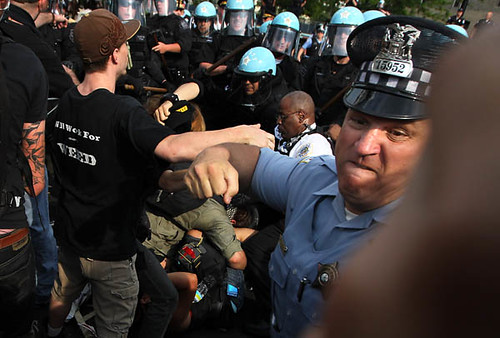
If you have any suggestions or if you want to interview someone for the blog, contact Ross Taylor or Logan Mock-Bunting.